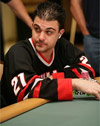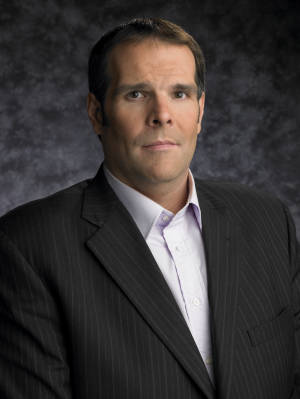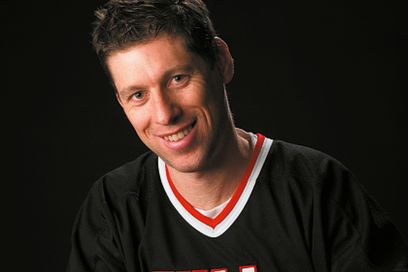
By John Agostino
 At the Council of last week, I shared with you some strategies for short-handed no-limit Hold'em tables'em. This week, I will continue with some tips for short handed limit Hold'em tables ' em.
At the Council of last week, I shared with you some strategies for short-handed no-limit Hold'em tables'em. This week, I will continue with some tips for short handed limit Hold'em tables ' em.
If you've read my column from last week, you know that the value of the hands changes short-handed and that it is correct to play many more hands than full ring. I play maybe even too hands in short-handed since I have the reputation of being a maniac. But there is a method behind this image. At the end of this column, I think you will understand me better.
The game of the button
In a 3 or 4 player limit Hold'em game ' em, I'm going to raise about 2 times on 3. The quality of my hand is irrelevant. The revival of this position puts me in control of the hand, even if I hold a trash hand. It's me who put pressure on the blinds and I hope only to hit a part of the flop.
For example, suppose that I raise the button and the big blind call with a modest, but playable hand, say Qc - Td. Now the flop falls with an ACE or a King. This hand will be hardly playable for him is it check and I bet the flop. In fact, the big blind will have difficulty playing any flop that does not contain a ten or a lady.
If I bet the flop with something like, 7-high, and I am calle or check-raisé, it will be very easy for me to fold my hand. I know that it will happen sometimes, but most of the time, I know that I return the pot and this will be rewarding aggression.
The small blind game
When you play against players who often raisent in position, make sure you answer them so aggressive on the small blind. If I have a hand which should be the highest three players sometimes a simple A-9 can be good and that I'm dealing with a revival of the button, I take control of the hand and I decide to do a three-bet (re - raiser). This puts even more pressure on the big blind. If I do that caller button, the big blind has excellent ratings (5:1) the caller additional upgrading. And I like much better play the hand heads up.
After bette three of the small blind, I pursue with a bet on the flop about 100 percent time. Given that I represented a hand strong pre-flop, I want that my opponent has a tough decision to take immediately. When I saw how my opponent responded, I can decide if I should continue with this hand. Sometimes I have to abandon my hand, but my putting will encourage my opponent to lie most of the time.
The set of the big blind
The big blind is the only position where I just caller preflop. In fact, the call is my usual reaction to a relaunch of the button. If I have a medium strength hand, I see the flop and I decide what I should do next. If I start with a starting hand very strong like KK or AA, I'll caller and wait for the right moment to checker - raiser. I do not like to three-bet of the big blind because it announces my hand. My opponent now knows that I have a very strong hand.
Your goal in general
As you may have guessed, I believe that aggression is the key to success in parts of limit hold ' em short-handed. I think that continuation bets and raises created a dynamic perfect for profits. Hand, the assailant, I have the chance to win pots immediately if my opponent missed the flop.
On the other hand, being always one who put, you encourage your opponents to make mistakes by making them poor decisions. After some time, your opponents will be caller to all streets with nothing more than ace-high or king-high. When they begin to do that, I can tighten me focusing that my strongest hands.
Sometimes my style can seem maniacal. But short-handed limit hold'em, it works.
 At the Council of last week, I shared with you some strategies for short-handed no-limit Hold'em tables'em. This week, I will continue with some tips for short handed limit Hold'em tables ' em.
At the Council of last week, I shared with you some strategies for short-handed no-limit Hold'em tables'em. This week, I will continue with some tips for short handed limit Hold'em tables ' em.If you've read my column from last week, you know that the value of the hands changes short-handed and that it is correct to play many more hands than full ring. I play maybe even too hands in short-handed since I have the reputation of being a maniac. But there is a method behind this image. At the end of this column, I think you will understand me better.
The game of the button
In a 3 or 4 player limit Hold'em game ' em, I'm going to raise about 2 times on 3. The quality of my hand is irrelevant. The revival of this position puts me in control of the hand, even if I hold a trash hand. It's me who put pressure on the blinds and I hope only to hit a part of the flop.
For example, suppose that I raise the button and the big blind call with a modest, but playable hand, say Qc - Td. Now the flop falls with an ACE or a King. This hand will be hardly playable for him is it check and I bet the flop. In fact, the big blind will have difficulty playing any flop that does not contain a ten or a lady.
If I bet the flop with something like, 7-high, and I am calle or check-raisé, it will be very easy for me to fold my hand. I know that it will happen sometimes, but most of the time, I know that I return the pot and this will be rewarding aggression.
The small blind game
When you play against players who often raisent in position, make sure you answer them so aggressive on the small blind. If I have a hand which should be the highest three players sometimes a simple A-9 can be good and that I'm dealing with a revival of the button, I take control of the hand and I decide to do a three-bet (re - raiser). This puts even more pressure on the big blind. If I do that caller button, the big blind has excellent ratings (5:1) the caller additional upgrading. And I like much better play the hand heads up.
After bette three of the small blind, I pursue with a bet on the flop about 100 percent time. Given that I represented a hand strong pre-flop, I want that my opponent has a tough decision to take immediately. When I saw how my opponent responded, I can decide if I should continue with this hand. Sometimes I have to abandon my hand, but my putting will encourage my opponent to lie most of the time.
The set of the big blind
The big blind is the only position where I just caller preflop. In fact, the call is my usual reaction to a relaunch of the button. If I have a medium strength hand, I see the flop and I decide what I should do next. If I start with a starting hand very strong like KK or AA, I'll caller and wait for the right moment to checker - raiser. I do not like to three-bet of the big blind because it announces my hand. My opponent now knows that I have a very strong hand.
Your goal in general
As you may have guessed, I believe that aggression is the key to success in parts of limit hold ' em short-handed. I think that continuation bets and raises created a dynamic perfect for profits. Hand, the assailant, I have the chance to win pots immediately if my opponent missed the flop.
On the other hand, being always one who put, you encourage your opponents to make mistakes by making them poor decisions. After some time, your opponents will be caller to all streets with nothing more than ace-high or king-high. When they begin to do that, I can tighten me focusing that my strongest hands.
Sometimes my style can seem maniacal. But short-handed limit hold'em, it works.




